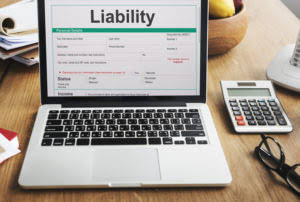Bookkeeping
Cash Book and Bank Statement Guided Format and Example

While a transaction is pending, it will be deducted from your available funds. Still, it can take two business days for the transaction to reflect in your account balance. The bank statement only provides the ledger balance to a particular date. Deposits made and checks written on or after this date do not appear on the statement. The ledger balance may be used to determine whether the requirement to maintain a specific minimum balance is being satisfied. The ledger balance differs from the available balance of the bank account.
The difference between bank balance and book balance
Similarly, interest earned on account balances needs to be recorded. These adjustments ensure that the company’s records accurately reflect the bank’s charges and credits. To reconcile a company’s financial records and book balance with the banking activity for an accounting period, a bank reconciliation statement can be created.
Examples of Account Balances

By ensuring that financial records are accurate and up-to-date, businesses can make informed decisions about their cash flow needs. This accuracy helps in forecasting future cash requirements, allowing companies to plan for expenses, investments, and potential financial challenges. A bank reconciliation statement can be prepared to summarize the banking activity for an accounting period to be compared to a company’s financial records and book balance. The book balance and bank balance may fluctuate from time to time due to errors in bank transactions that need to be corrected.
AccountingTools

Moreover, regular reconciliation helps in identifying patterns and trends in cash flow. For instance, businesses can spot recurring expenses that might be reduced or eliminated, or identify periods of high cash inflow that could be leveraged for growth opportunities. This proactive approach to cash flow management can lead to more strategic financial planning and better resource allocation. The bank balance is the balance reported by the bank on a firm’s bank account at the end of the month. Repay the total statement balance before the due date whenever possible so you don’t incur interest. The only way to avoid interest is to pay the total statement balance off in full, not just the minimum amount due.
What are the examples of bank statement entries that may not appear in cash book?
- The term is most commonly applied to the balance in a firm’s checking account at the end of an accounting period.
- Our goal is to provide you with top-notch content, data, and tools.
- Occasionally we discover a bank error, such as a deposit we have proof of making that did not get “credited” to our account.
- For instance, let’s say Alice wants to purchase a larger piece of property in order to open her bakery shop business.
This is especially true when comparing your statement vs current balance on your credit card. We’ll address that issue in more detail in the “How To Balance Your Checkbook In The Electronic Banking Era” section. Read on for instructions on how to balance your checkbook (including a visual example) and reconcile your bank statement through both traditional and modern methods. You can also get tips for using your check register and keeping an account in good standing. You have a payroll deposit of $500 and $150 charges on your bank card.

For instance, let’s say Alice wants to purchase a larger piece of property in order to open her bakery shop business. She can check her balance sheets from the prior quarters’ first and third quarters to see if she has enough cash on hand or equity to make a down payment on a home. Balancing of books holds major significance for all companies or small business owners. You can easily ascertain the financial status of your company or business when you keep an accurate bookkeeping system. Balancing the books may sound daunting and exhausting task, but it is highly crucial for larger or small businesses.
Available Balance vs Total Balance
However, there are several scenarios when the book balance can differ from a company’s bank balance. Those checks that have been written but haven’t yet been paid by a financial institution. The bank account balance would not currently reflect these book balance vs bank balance deductions, but the book balance would. The company’s book balance will be less than the bank balance up to that point since the checks haven’t been delivered to the payor’s bank for payment to the payee and deposited into the payee’s bank.
Which of these is most important for your financial advisor to have?
- Cash advances from your credit card can be handy in an emergency, but they are not the best route to take.
- The bank balance is an external view of the company’s financial status and can be accessed through bank statements or online banking platforms.
- The balance recorded in your books (again, the cash account) and the balance in your bank account will rarely ever be exactly the same, even if you keep meticulous books.
- The book balance and the bank balance of a corporation, however, might diverge in a number of circumstances.
- This helps ensure transparency and avoid any financial risks from inaccurate recording or reconciliation errors.
- Checks issued by the account holder to their suppliers may not have been presented to the bank for payment by the last day of the month to which the bank statement relates.
This makes balancing your checkbook harder because physical checks are no longer the only way money moves in or out of your account. When you log into your mobile or online banking, you may not see the most updated information. Some banks display both the current and available balances, so consumers can tell how much they have to use at their disposal.
- The source of bank statement entries is cheques deposited by customers, payments made to suppliers by issuing a draft or check.
- The bank statement only provides the ledger balance to a particular date.
- Once you understand the different types of accounts that banks have to offer, you can decide which type works best for you and your personal and business banking needs.
- At the end of the month, the business’s bank account is typically credited with interest collected on accounts, which is then paid on the cash balance.
- In a small business, that responsibility usually falls to the owner (or a bookkeeper, if you hire one. If you don’t have a bookkeeper, check out Bench).
- The interest could be from a savings account or a cash sweep, which is when the bank withdraws unused funds in a company’s checking account and invests that money in short-term investments.

If you use the accrual system of accounting, you might “debit” your cash account when you finish a project and the client says “the cheque is going in the mail today, I promise! Then when you do your bank reconciliation a month later, you realize that cheque never came, and the money isn’t in your books (even though your bookkeeping shows you got paid). Any credit cards, PayPal accounts, or other accounts with business transactions should be reconciled. When you “reconcile” your bank statement or bank records, you compare it with your bookkeeping records for the same period, and pinpoint every discrepancy.
- Yes, you can pay more than the minimum payment due in your statement.
- Banks may charge fees for various services or offer interest on account balances, which might not be immediately recorded in the company’s books.
- The book balance consist of all transactions that a company does within an accounting cycle, such as a fiscal or quarter year.
- It can mean credit card theft, but there are legitimate reasons for them to appear on your statement, too.
- Monitoring balances on a regular basis alerts a customer of any unauthorized transactions that occur or potential errors committed by the bank.
Checking accounts are used for everyday spending–whether your personal checking or business checking account. You can link a debit card to this account to use for purchases or withdrawal or deposit cash from ATMs (keep in mind that some ATM’s may charge card fees). Checking accounts do not build interest but they’re great for daily transactions and allow you to deposit cash, write checks, and pay bills. When you log into an online banking account, the first thing you will see is your account balance.

